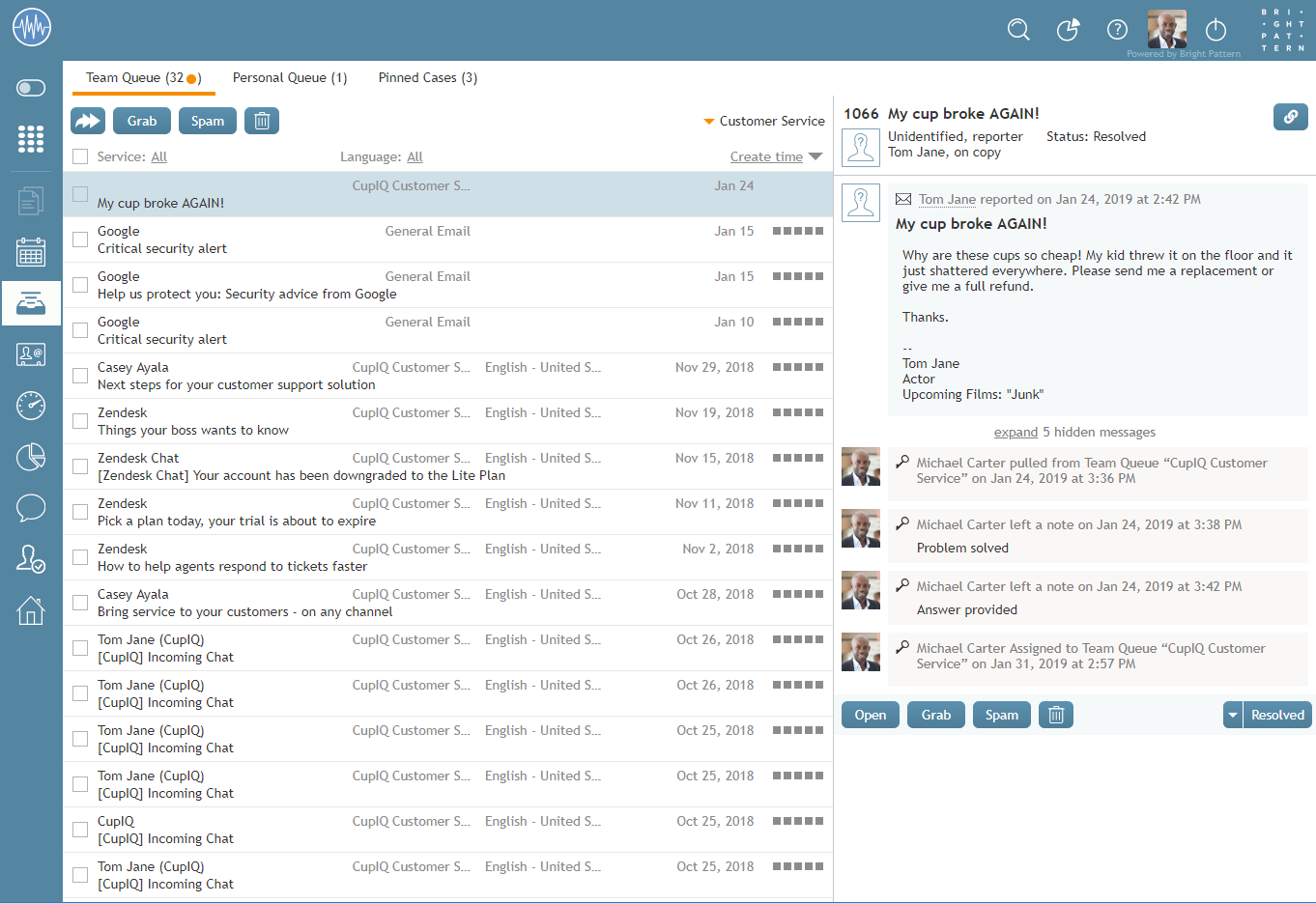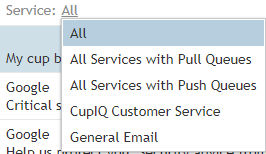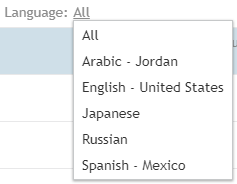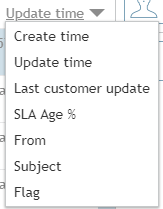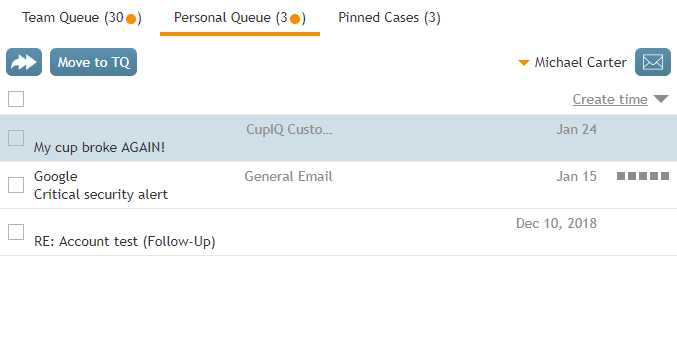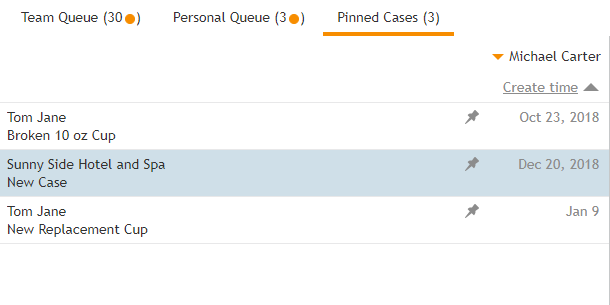| Line 1: | Line 1: | ||
<translate>= My Cases Interface = | <translate>= My Cases Interface = | ||
| − | In order for you to better understand all the things you can do in the My Cases section, you will need to get familiar with all the working parts and pieces, how cases are displayed, and so forth. The following describes what you will see in this section of Agent Desktop | + | In order for you to better understand all the things you can do in the My Cases section, you will need to get familiar with all the working parts and pieces, how cases are displayed, and so forth. The following describes what you will see in this section of Agent Desktop. |
Revision as of 00:17, 2 February 2019
<translate>= My Cases Interface = In order for you to better understand all the things you can do in the My Cases section, you will need to get familiar with all the working parts and pieces, how cases are displayed, and so forth. The following describes what you will see in this section of Agent Desktop.
Team Queue
The Team Queue is your team's email inbox. Note that if your contact center distributes email through the push method, emails will route directly to your Personal Queue.
Assign button
The assign button allows supervisors to assign an email to an agent on their team.
Grab button
If pull queue is enabled, the Grab button allows you to take a case from the team queue; when grabbed, the case will appear in your Personal Queue.
Spam button
The spam button removes selected cases from your Team Queue.
Trash button
The trash button deletes cases from your Team Queue.
Case Filters
Case filters allow you to quickly organize and sort through your Team Queue's emails. The following filters are available.
Service
If you have access to more than one service, the service filter allows you to sort emails per service. Additionally, supervisors have the ability to filter per email distribution type (i.e., push or pull).
Languages
The languages filter allows you to sort your emails by the languages recognized by your contact center.
Case details
The case details filter allows you to sort emails by pertinent details; this filter includes a further option to organize by ascending/descending order by clicking the grey triangle . Case details filters include the following:
Create time
Create time is the time the email first arrived in your contact center.
Update time
Update time is the time the email was last updated.
Last customer update
Last customer update is the time a customer last interacted with your contact center through a given email.
SLA Age %
The SLA Age % filter displays emails by age according to your contact center's SLA percentage (i.e., SLA means "service level agreement").
From
From displays emails in alphabetical order based on name.
Subject
Subject displays emails in alphabetical order based on the subject line.
Flag
The Flag filter allows those emails that have been flagged to be displayed at the top of the queue.
Personal Queue
The Personal Queue is the destination for emails you have grabbed, have had assigned to you by a supervisor, or not immediately accepted (i.e., if your contact center uses push method of distribution). Additionally, if you are a supervisor, your Personal Queue will contain an assign button, allowing you to assign cases to agents on your team.
Move to TQ button
The Move to TQ button allows you to move a selected case from your Personal Queue back to the Team Queue.
Compose email button
The Compose email button allows you to create a new case. For more information, see How to Create New Cases.
Pinned Cases
Pinned cases are the cases you want quick access to for any number of reasons (e.g., historical reference, examples, etc.). When you pin a case, it acts as a shortcut. All cases that you pin will be kept in your personal Pinned Cases section.
Case Header
The case header area displays information related directly related to the case. The following is a list of the type of information you can see.
Case number
Case number is the number assigned to an interaction in chronological order. All emails to your contact center are automatically assigned case numbers; manually created cases receive these numbers, too. To manually create cases from other types of interactions, see How to Create New Cases.
Subject
This is the subject line of the email/case.
Link button
The link button copies a sharable link of the case to the clipboard, allowing you to paste the link elsewhere; this makes it possible for you to share the case with other agents or supervisors in your contact center.
Current assignments
Current assignments are basic historical details related to the case. The following is a list of the types of information you can see in the case header.
Reporter
The reporter is the identified customer who contacted your contact center.
On copy
On copy is an unidentified customer who contacted your contact center.
Status
Status displays the current case status. Note that if the status is Pending, the pending reason will be displayed, also.
Assigned to
This is displays the name of the agent the case is assigned to.
Pinned by
This displays the name of the agent or supervisor who pinned the case.
Case History
Case history is displayed in each case as records showing completed actions; additionally, the date and time the action was completed is displayed. The following is a list of what is considered a completed action:
- Agent Desktop pushing an email to an agent
- Transferring a case from one agent to another agent or to a different queue or service
- Agents pulling emails from the Team Queue
- Agents opening emails
- Supervisors assigning emails from a Team Queue
- Saving notes to a case
The case footer displays several of the same buttons seen at the top of the Team Queue (e.g., Grab, Spam, etc.). Additionally, the footer contains the Open button, which opens the case, and the case status button, which will display the current case status.
</translate>

